A cornerstone of our philosophy on this website is that although soccer is a team sport, individual skills are essential. Each player needs to know and be able to execute the fundamentals and when they do this can elevate the team to a whole new level.
Many players have a soccer goal in their backyard, but a soccer rebounder is a perfect way to practice individual skills. Whether it’s target shots, ball control, or trapping, you’ll need a rebounder for your practice.
Top 5 Soccer Rebounders
We’ve tried to save you some effort and handpicked the best five soccer rebounders on the market and reviewed them for you.
QuickPlay Pro Rebounder Adjustable Angle Multi-Sport Trainer
Stripping a soccer rebounder to its essence, you need a sturdy frame with a durable net that provides good rebound upon impact. An adjustable angle and a reasonable price would be a plus. These specs apply to QuickPlay Pro’s rebounder.
QuickPlay Pro’s rebounder is available in four sizes variations; the 2.5 x 2.5 inches and the 3 x 3 inches are available as flat pants, whereas there are dual-panels at sizes 5 x 5 and 7 x 7 inches.
This rebounder works well as practice for shooters as well as goalkeepers. Even better, both can use it for a one-on-one practice session!
One of the merits of QuickPlay Pro’s rebounder is that it’s capable of adjusting into a negative angle, meaning that it can lean forward past the vertical position, which is a highly challenging practice, by the way.
The sturdy frame features a rubber base that helps it gain traction and stick well to any surface type. All these features easily make QuickPlay Pro our favorite rebounder on the list.
Apart from other rebounders in its price range, QuickPlay Pro’s rebounder comes with a two-year warranty, which shows how much the manufacturers are standing behind their product.
Check Current Pricing and Read More User Reviews
Tekk Trainer Rebounder Goal
Tekk’s trainer rebounder checks all the items on our list; it’s wide, convenient, and adjustable at a handful of angles, making it a perfect choice for children and grown up’s practice. That’s why it’s the choice of many soccer academies all over the world.
The frame is made of powder-coated artifact-grade aluminum and measures 5 x 8 x 4 inches. The nylon net is durable, and it’ll rebound the ball back at full speed. The ball won’t lose power, which is in your practice’s best interest.
The ball speed might be surprising to some. The ball comes at you at full speed, so that you might need some adjustment, and here’s when the angle adjustments come in handy. You can choose between seven angle adjustments to practice different shots.
The main downside of this rebounder is that its assembly might need some time. It’s even better to get some help to get the job done.
It’s a tad overpriced, but honestly, it’s worth the price for its versatility and heavy-duty construction.
Check Current Pricing and Read More User Reviews
SKLZ Quickster Soccer Trainer Portable Soccer Rebounder
If you want performance that’s close to the Tekk Trainer, but at a more affordable price, SKLZ’s portable rebounder is a solid contender.
The dual net provides a true-roll experience designed to help players master ball control from head to toe, specifically receiving and passing the ball from/to the ground. You’ll get a chance to train your chest, torso, and legs, of course.
The setting up process is pretty straightforward, and it won’t take much time. Yet, it’s not the most stable when it comes to how it holds to the ground. You can secure it with some sandbags to enhance its stability.
Not all rebounders are portable. That’s another thing that gives SKLZ’s rebounder an edge over its counterparts. Thanks to its lightweight and foldable action, you can put it in a big pouch and transfer it quickly.
The pitfall here is that the design is limited to passing skills. You won’t probably be able to work out other skills using this net. However, we think that’s okay given its price.
Check Current Pricing and Read More User Reviews
Goalrilla Striker Soccer Rebound Trainer
For people who’re more serious about their practice, those who want to take it up a notch, Goalrilla’s striker rebound trainer is probably your best bet.
At first glance, you can tell that this is a well-designed rebounder. The net is super responsive, and it’s bounded by side nets, where it acts as a goal. This is a nice chance for goalkeepers to use it also for practicing one-on-ones.
The sturdy frame is made of powder-coated steel to resist the elements, rust, and corrosion. More importantly, the corners are welded so that you don’t get into the hassle of flimsy parts that break down when they get shot at violently.
We love this rebounder because it exudes quality. Besides, it’s suitable for all ages and all skill levels, so it’s perfect for any setting where multiple players will be using it.
Check Current Pricing and Read More User Reviews
Trigon Sports Soccer Rebounder Training Net
Double-sided rebounders are perfect for group settings, where the net can take shots from both sides efficiently. That’s why we couldn’t wrap up our list without mentioning this amazing rebounder from Trigon.
Its size is relatively large (6 x 12 inches), and it’s made of a durable galvanized steel frame that’s powder-coated to resist rust and corrosion. Each side is armed with three ground stakes to stabilize it, making it one of the best rebounders that stick to the ground.
The assembly is simple, but it’ll take around 20 minutes or so. Yet, this is one of the sturdiest rebounders on the market. If you have the space for it, go for the Trigon soccer rebounder for efficient soccer training sessions.
Check Current Pricing and Read More User Reviews
Wrap Up
You’ve got to set your practice goals to pick the rebounder that’s best for your needs. Will you be practicing with a group or on your own? Will you be using your legs only, or do you need to practice upper body control? Are you interested in adjustable rebounders?
The answers to these questions should guide you through the choice process.





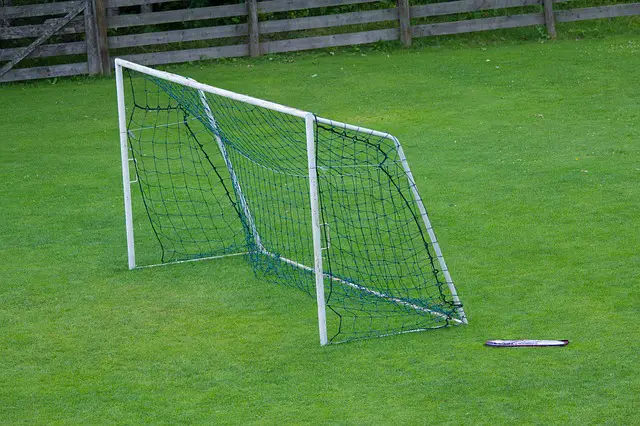



 One major theme that we always try to show players is that in order to get better at soccer, you need to put in work outside of official team practices.
One major theme that we always try to show players is that in order to get better at soccer, you need to put in work outside of official team practices.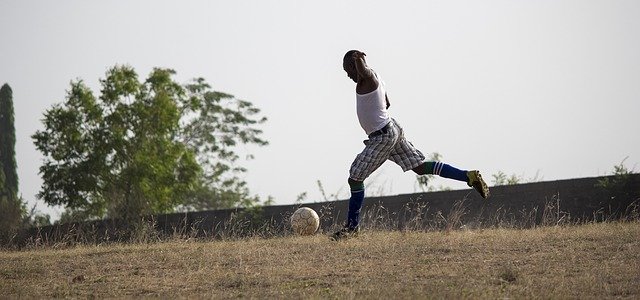
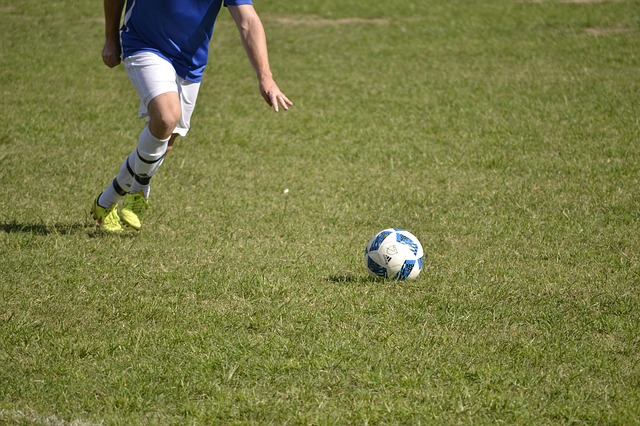
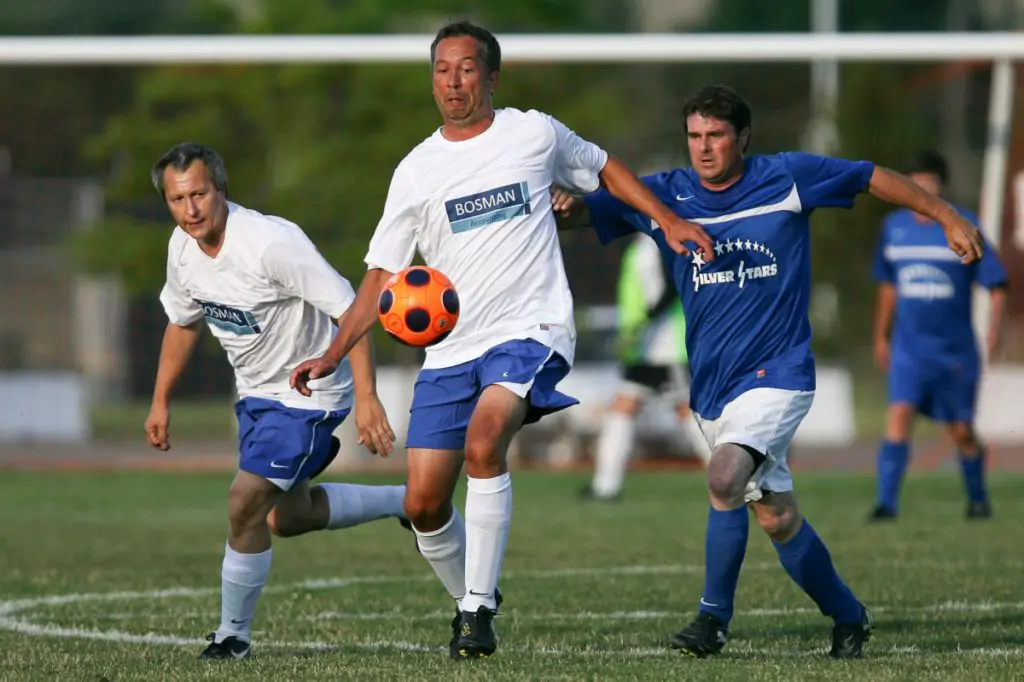 For our first ever blog post, we shared 5 Ways to Improve Your Skills in Your Backyard. In that article, the second way to improve your skill was working on your trapping. Trapping the soccer ball is actually an older term that’s fallen out of fashion; the updated term is receiving.
For our first ever blog post, we shared 5 Ways to Improve Your Skills in Your Backyard. In that article, the second way to improve your skill was working on your trapping. Trapping the soccer ball is actually an older term that’s fallen out of fashion; the updated term is receiving. 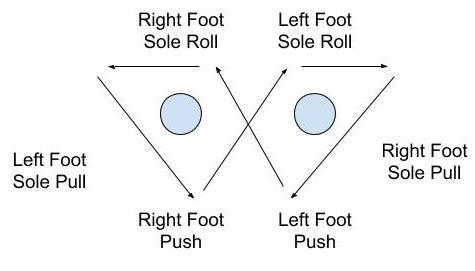 For this exercise, you will need two cones about two yards apart. Start with the ball outside of the right cone at a 45 degree angle. You will need to pull the ball with sole of your right foot back below and between the two cones. With your the inside of your left foot, push the ball between the two cones. With the sole of your right foot, roll the ball outside the cone. Next, use the sole of your left foot to pull the ball back below and between the two cones. Use the inside of your right foot to push the ball between the two cones. Finally, with the sole of your left foot, roll the ball outside the cone. Now you are back to the beginning. Perform the Figure 8 dribbling drill for 30 seconds to 1 minute. You may want to start out slow to get a rhythm, but make sure you quickly pick up the pace to perform this exercise as fast as possible. Remember, you will always alternate using your right foot and then left foot.
For this exercise, you will need two cones about two yards apart. Start with the ball outside of the right cone at a 45 degree angle. You will need to pull the ball with sole of your right foot back below and between the two cones. With your the inside of your left foot, push the ball between the two cones. With the sole of your right foot, roll the ball outside the cone. Next, use the sole of your left foot to pull the ball back below and between the two cones. Use the inside of your right foot to push the ball between the two cones. Finally, with the sole of your left foot, roll the ball outside the cone. Now you are back to the beginning. Perform the Figure 8 dribbling drill for 30 seconds to 1 minute. You may want to start out slow to get a rhythm, but make sure you quickly pick up the pace to perform this exercise as fast as possible. Remember, you will always alternate using your right foot and then left foot.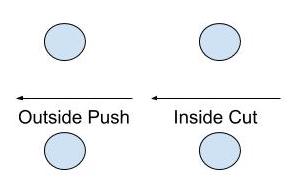
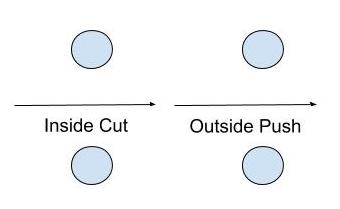
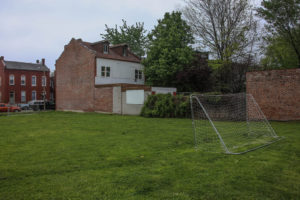 Here at Soccer Training Solutions, we’ve already given you some helpful tips for how you can
Here at Soccer Training Solutions, we’ve already given you some helpful tips for how you can